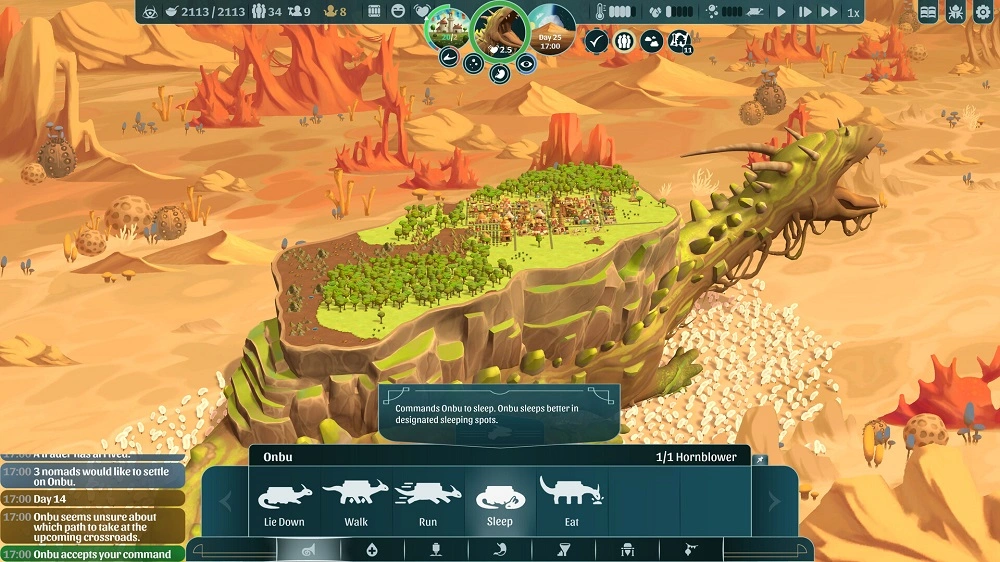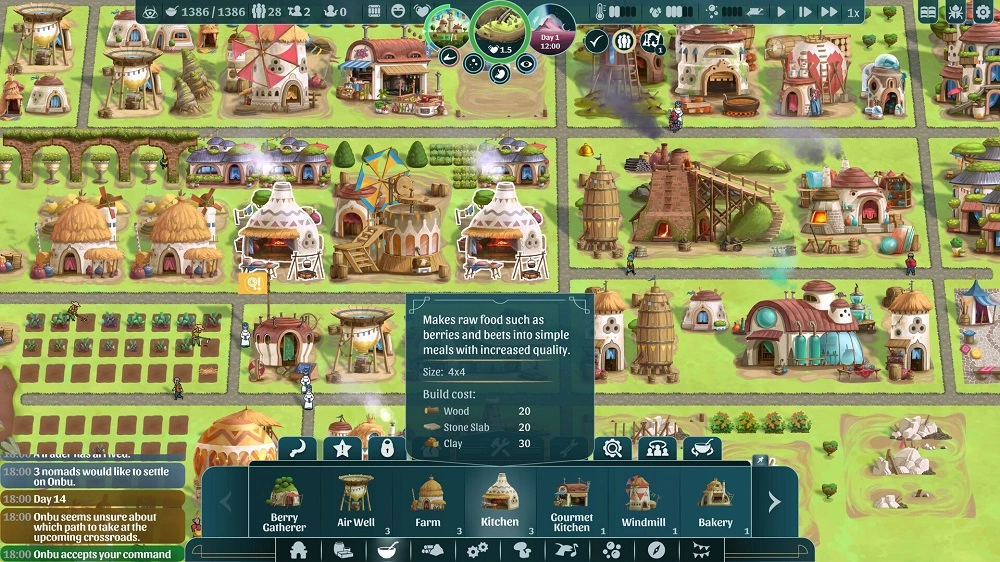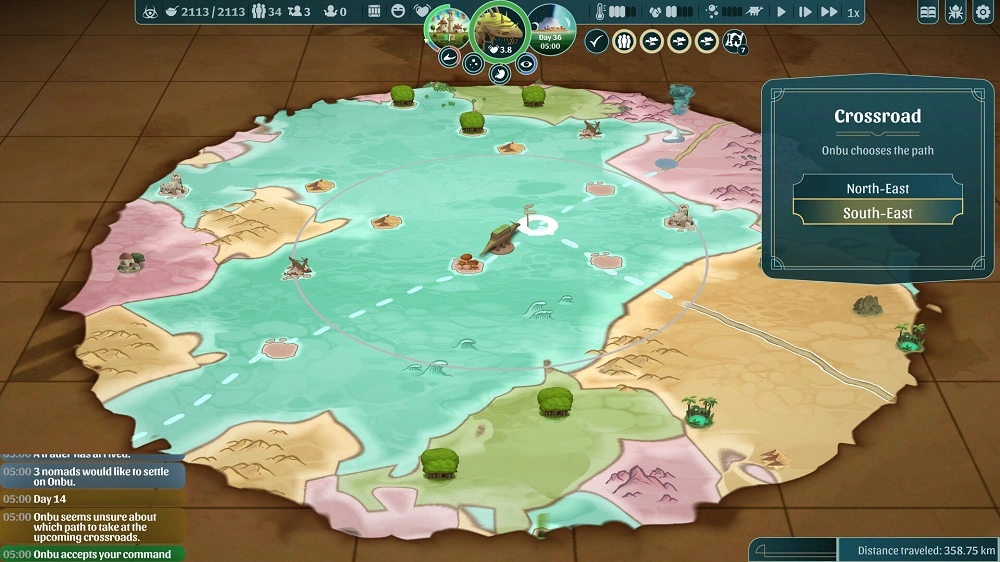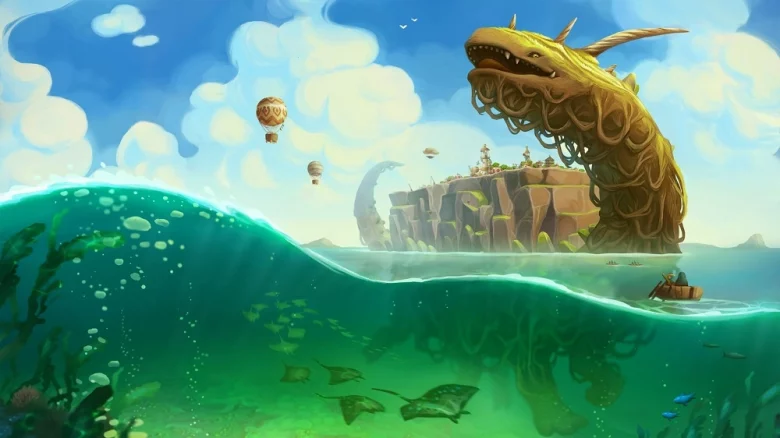City-builders have always been a mixed bag. Some require constant supervision in case of utter disaster. Others run smoothly without little error. The key to success is finding that balance between challenge and control. The Wandering Village manages to walk the line between simplicity and success, where the difficulty is there yet it doesn’t need to be. It has a comfortable learning curve where frustration will stay away as long as you learn its systems early on.
After toxic spores have consumed the land, a group of nomads have found solace on the back of a giant creature known as an Onbu. It’s a clever concept that brings challenges outside of simply managing your city. The Onbu has its own needs and will act independently of you. There are ways to gain its trust. You can try and work together with them, but it is still a wild creature that is trying to survive as well. Finding that sweet spot will make things easier, but there’s always the chance something might go wrong.

Creating a symbiotic relationship with the Onbu acts as its own challenge alongside simply keeping your people alive. You learn to give it commands and help to change its trajectory as it moves through the land. There are different biomes in The Wandering Village that bring with it new ideas and problems. Forks in the road send you down new paths. Travelling across oceans and deserts will affect how you live and how you survive, and these refreshing challenges help to keep you on your toes.
It doesn’t take long to get stuck into The Wandering Village. While there are plenty of systems you need to keep control of, you’re never overwhelmed. Some city-builders can leave you feeling out of control in the early stages. Frostpunk is a punishing game where you can lose your way without knowing what you did or how to fix it. With this, the menus are laid out simply enough, and the fundamentals are what makes you feel that if something goes wrong, you know exactly how to get back on track.
Various resources need to be harvested on the back of the Onbu. Clay deposits, stone formations, forests for wood. Nomads will consistently join your community, and they can be put to work to gather these key resources. In turn, they can be turned into homes, factories, and buildings that help your community thrive. Farms need to be built to harvest crops. New foods can be harvested to keep your community fed. As new biomes are discovered, new resources become available, but the cold and heat of these places affect your current yields.

There’s always a lot to think about while trying to keep your civilisation alive. I never got overwhelmed with what I needed to do, and that’s something I appreciated about The Wandering Village. You can manage a limited community in favour of not burdening the Onbu with too much ravishing of its resources. The problems come with maintaining that relationship with this giant creature in favour of your own people’s needs. The weight of survival weighs heavy, but you always have plenty of options available.
The research centre will give you new buildings that can keep your people healthy, offer more efficient ways to harvest, provide new opportunities to improve your community, and more. There are also missions that unearth the mysteries of the world and your Onbu. I found a welcoming mix between unearthing parts of the story and simply being allowed to enjoy the mechanics. Despite having all of these chances to craft your own story, you do feel shoehorned into a singular route too survival with a lack of freedom.

Another key feature that helps to make The Wandering Village enjoyable is the beautiful visuals. It reminds me of early Studio Ghibli movies. Those pretty animations that provide the same kind of warmth as Castles in the Sky and My Neighbour Totoro help to keep you engaged in the lives of your people and the Onbu. Zooming into your village and seeing them go about their day, then zooming out to see your Onbu wandering around the world is so cool.
The Wandering Village isn’t as robust as other city builders, but there’s still a lot to do. The difficulty finds a good balance, and you’re given plenty of help to learn its mechanics without being overwhelmed. The visuals are wonderful, and the concept of a city existing on the back of a gargantuan and ancient creature gives the genre a fresh feeling, despite never really building the kind of emotional attachment to the giant beast. All in all, there’s plenty to enjoy about Stray Fawn Studio’s latest.
